Comparison of Child Sizes to Fruits

Reviewed by: HiMommy Expert Board
·
5 min read
·
Jun 11, 2025
Table of contents
The development of a child in the mother's womb is one of the most remarkable aspects of the pregnancy experience. It's a magical journey through various stages during which a tiny embryo grows and evolves, transforming from a minuscule speck into a healthy baby. One way that helps us better understand this extraordinary process is by comparing the size of the child to fruits and vegetables.
Child Size in the First Trimester
In the first trimester of pregnancy, the developing fetus undergoes many dynamic changes, even though it starts off incredibly small. Below, I'll provide descriptions of the fetus's size in each week of the first trimester and analogies to fruits that can help grasp these changes:
1-2 weeks
At the moment of fertilization and implantation of the embryo in the uterus, the fetus consists of only a few cells and is nearly invisible to the naked eye - it can be compared to a grain of salt or sugar.
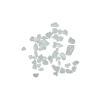
3-4 weeks
By the third week, the fetus is about 1-2 mm in length. The formation of both the embryo and the placenta begins, which will nourish and support the developing child. The size of the fetus is similar to a grain of lentil.
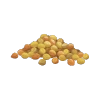
5-6 weeks
At this stage, the fetus measures approximately 5-6 mm in length. Basic organs like the heart, brain, and circulatory system start to form. The size of the fetus can be compared to a mustard seed.
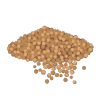
7-8 weeks
In the seventh and eighth weeks, the fetus reaches a length of about 1.5-2.5 cm. This is when the child's heart begins to beat, and tiny hands and feet become more visible. The size of the fetus is similar to an olive.
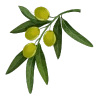
9-10 weeks
In the ninth and tenth weeks, the fetus grows to around 3-4 cm in length. This is the stage when the embryonic period concludes, and the child becomes a fetus. Many internal organs continue to develop. The size of the fetus is akin to a plum.

11-12 weeks
Towards the end of the first trimester, the fetus measures about 5-6 cm in length. Its skeletal system begins to form, and the face takes on more human-like features. The size of the fetus can be likened to a quince.

Fetal Growth in the Second Trimester
During the second trimester of pregnancy, the developing fetus continues its dynamic growth and development. Let's now go through the changes in the size of the fetus in each week of the second trimester, along with comparisons to fruits and vegetables that can help better understand these stages:
13-14 weeks
In the thirteenth and fourteenth weeks, the size of the fetus is significantly larger than in early pregnancy. The fetus now measures about 7-9 cm in length, which can be compared to the size of a lime.

15-16 weeks
During the fifteenth and sixteenth weeks of pregnancy, the fetus reaches a length of approximately 12-15 cm, which is similar in size to an avocado.
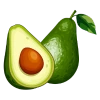
17-18 weeks
Another growth spurt occurs in the seventeenth and eighteenth weeks when the baby measures about 15-20 cm, roughly the size of an average carrot.

19-27 weeks
By the end of the second trimester, the size of the fetus reaches a length of about 25-30 cm, akin to a small zucchini.

During these weeks, in addition to significant growth, the fetus develops many important features such as the nervous system, the auditory system, and the ability to perceive external sounds. It's also the time when the mother begins to feel the baby's movements, which is a unique moment during pregnancy.
The Third Trimester - Maximum Sizes
The third trimester of pregnancy is the period during which the developing fetus reaches its maximum sizes and matures in preparation for birth.
28-29 weeks
At the start of the third trimester, in the twenty-eighth and twenty-ninth weeks, the fetus measures about 35-40 cm in length, similar in size to a cauliflower.
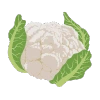
30-31 weeks
n the thirtieth and thirty-first weeks, the size of the fetus is approximately 40-45 cm, akin to the size of a small watermelon.

32-33 weeks
Another growth spurt occurs in the thirty-second and thirty-third weeks when the baby measures about 45-50 cm, which is similar to the size of a small cantaloupe.
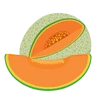
34-40 weeks: In the final weeks of pregnancy, the fetus reaches a length of about 50-60 cm, similar in size to a larger watermelon.

It's in the third trimester that the baby achieves its maximum sizes, and the mother's body prepares for childbirth. It's worth emphasizing that every pregnancy is somewhat different, so exact sizes may vary slightly.
Summary
By comparing the size of the child to fruits and vegetables, we can appreciate the remarkable and intricate process of prenatal development. The fetus goes through incredible changes, starting from a tiny pea-sized entity and growing to the size of a medium-sized watermelon. This journey is filled with challenges and fascinating stages.
Comparing fetal sizes to fruits serves as a tool to comprehend the scale of this miraculous process, allowing for a more concrete visualization and an appreciation of the evolution of life taking place within the mother's womb.